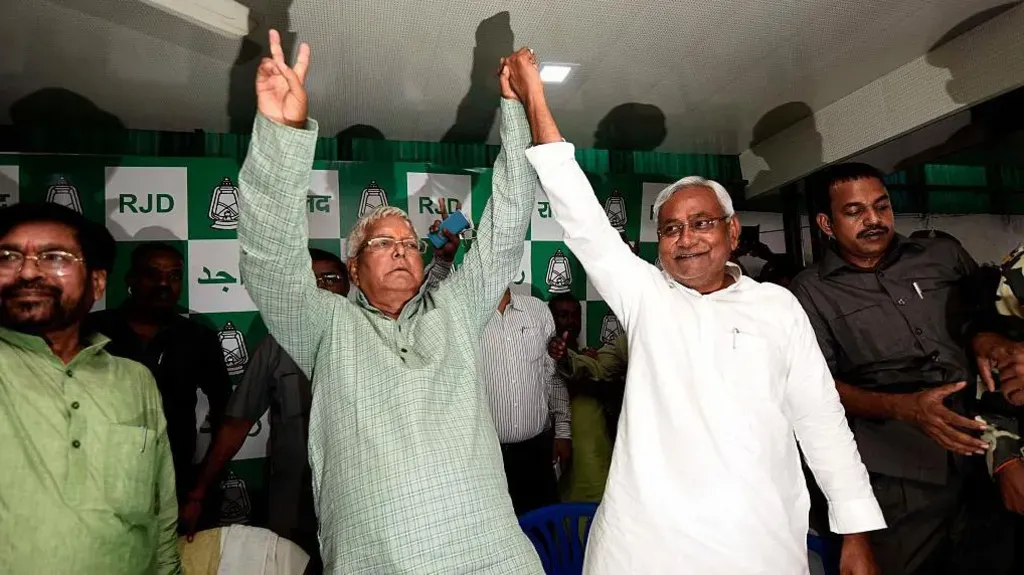Published 06 Nov 2025
Modi’s Party Faces Test in Crucial Indian State Election
Prime Minister Narendra Modi’s BJP faces a major test in a key state election that could shape India’s political landscape ahead of the 2026 general elections.

Prime Minister Narendra Modi’s Bharatiya Janata Party (BJP) is facing one of its biggest political challenges this year as voting begins in a key Indian state, seen as a major test of the ruling party’s popularity before the next general elections.
The election, spread over multiple phases, will determine whether Modi’s party can maintain its dominance amid growing opposition unity and public debate over unemployment, inflation, and regional issues.
Why This Election Matters
Political analysts see this state poll as a mini-referendum on Modi’s leadership and his government’s policies.
While the Prime Minister remains personally popular nationwide, local anti-incumbency and economic concerns could impact the BJP’s performance at the state level.
The outcome will not only shape state politics but could also influence alliances and campaign strategies for the 2026 Lok Sabha elections.
A High-Stakes Battle for BJP
The BJP, which currently governs several key states across India, has built its campaign around Modi’s national image, promising stability, development, and welfare schemes.
Senior BJP leaders, including the Prime Minister himself, have held multiple rallies across the state, focusing on infrastructure growth, women’s empowerment, and digital governance.
However, party insiders admit that local dissatisfaction, especially over rising prices and unemployment, may pose a challenge.

Opposition Seeks Revival
The Congress Party and several regional allies have joined forces to present a united front against the BJP.
Congress leader Rahul Gandhi has accused the ruling party of ignoring common people’s concerns while favoring corporate interests.
He said during a recent rally,
“This election is not just about a state — it’s about saving democracy and protecting the idea of India.”
Opposition parties are banking on rural voters, youth, and farmers to swing the results in their favor, highlighting issues like falling agricultural incomes and the demand for better job opportunities.
Key Issues Dominating the Campaign
1. Economy and Jobs
Unemployment remains a pressing concern, especially among young voters. Opposition parties have used this issue to attack the government, while the BJP has cited new industrial projects and digital initiatives as proof of job creation.
2. Development and Infrastructure
The BJP has emphasized its track record of road construction, rural electrification, and welfare schemes like PM Awas Yojana and Ujjwala gas connections.
3. Caste and Regional Politics
Regional identity and caste equations continue to play a big role. Analysts say the BJP’s ability to balance upper-caste support with that of backward and tribal communities will be crucial in this election.
4. Farmer Concerns
Farmer groups have raised demands for better Minimum Support Prices (MSP) and loan waivers, reminding the government of their protests from recent years.
Voter Turnout and Early Trends
According to the Election Commission, the first phase of polling saw a turnout of around 68%, indicating strong voter participation.
Urban centers recorded moderate polling, while rural areas witnessed long queues outside voting booths.
Officials said voting remained peaceful, with minor delays reported in some constituencies due to technical issues in electronic voting machines (EVMs).
Political Analysts Weigh In
Experts believe the election outcome will serve as a political signal for 2026, showing whether the BJP’s national popularity can still translate into state-level victories.
Political analyst Meera Singh noted,
“If BJP wins comfortably, it will reinforce Modi’s dominance ahead of the national polls. But if the result is close or unfavorable, it could energize the opposition alliance.”
Modi’s Campaign Message
Throughout his campaign speeches, Prime Minister Modi has called on voters to support “development, good governance, and national pride.”
He said at one rally,
“This election is not about one leader or one party. It is about ensuring progress for every family in this state.”
His message has focused on continuity and stability, appealing to voters who credit his government for improving India’s global image and strengthening welfare delivery.
Opposition’s Counterattack
The opposition has accused the BJP of focusing more on image-building than governance.
Congress and regional leaders have repeatedly raised questions on unemployment data, inflation, and privatization policies.
They argue that Modi’s charisma may not be enough to overcome local dissatisfaction if daily life issues dominate voter sentiment.
What’s at Stake
For the BJP, victory would reaffirm its political supremacy and help it enter the general elections with renewed confidence.
For the opposition, a win here could revive momentum and prove that the ruling party is not invincible, especially in states where regional issues matter more than national slogans.
The final outcome will also influence cabinet reshuffles, alliance talks, and campaign narratives heading into 2026.
In Summary
- Prime Minister Modi’s BJP faces a tough electoral test in a politically crucial state.
- The election is seen as a prelude to the 2026 general elections.
- Key issues include unemployment, inflation, and regional identity politics.
- The Congress-led opposition hopes to regain relevance by challenging the BJP’s dominance.
- Results will serve as a barometer of Modi’s popularity at both national and grassroots levels.
Conclusion
As ballots are cast and campaign speeches fade, the focus now shifts to counting day — when India will find out whether Modi’s political juggernaut remains unstoppable or whether the opposition has managed to dent its winning streak.
Whatever the result, one thing is certain: this state election is more than a local contest — it’s a national test of leadership, credibility, and the mood of Indian democracy.

Dr Sudheer Pandey
94% of readers found this post helpful
0 Votes
Click a star to add vote